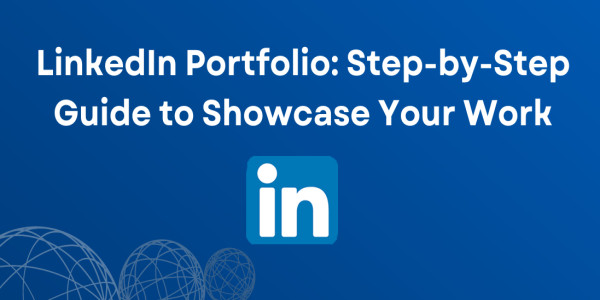❏ Knowledge & Learning Details

Data Visualization ❘ 1 ❘ 262 ❘ 0
How to Build a Specialized LinkedIn Portfolio with Projects, Research, and Experiences
How to Build a Specialized LinkedIn Portfolio with Projects, Research, and Experiences
A specialized LinkedIn portfolio sets you apart by showcasing your expertise, projects, and accomplishments in a way that attracts recruiters and collaborators. Here's how to create a standout portfolio:
Step 1: Highlight Your Niche in the Headline
🎯 Showcase Your Expertise
- Tailor your LinkedIn headline to reflect your specialization.
- Example:
"AI Researcher | Published Author in Deep Learning | Building Ethical AI Solutions"
Step 2: Use the Featured Section Effectively
🌟 Showcase Key Work
- Pin important projects, research papers, or presentations to your profile.
- Add links to:
- GitHub repositories
- ResearchGate profiles
- Conference presentations
📄 How to Add
- Go to your profile and scroll to the Featured Section.
- Click + Add and upload your files or link external projects.
Step 3: Detail Your Research Work
📘 Create a Research Section in Experience or About
- Highlight:
- Published papers (with titles and journals).
- Ongoing research topics.
- Conferences or symposiums attended.
🔗 Example Description
“Published ‘Optimizing Neural Networks for NLP’ in IEEE Journals. Collaborated with researchers from XYZ University to develop a scalable model for sentiment analysis.”
Step 4: Add Projects in the Projects Section
🛠️ Showcase Your Work
- Add significant personal, academic, or professional projects.
- Include:
- Project title.
- Brief description.
- Tools/technologies used.
- A link (GitHub, website, or portfolio).
📋 Example
- Title: Real-Time Weather Forecasting System
- Tools: Python, TensorFlow, AWS
- Description: Developed a machine learning model for predicting weather patterns with 92% accuracy.
Step 5: Expand Work Experience with Relevant Details
💼 Focus on Specialized Roles
- List specific responsibilities that highlight your expertise.
- Include quantifiable results where possible.
📊 Example
- Role: Data Analyst, ABC Corp
- Achievements:
- Automated data processing pipelines, reducing analysis time by 30%.
- Designed dashboards for real-time KPI tracking using Tableau.
Step 6: Add Certifications
📜 List Niche Certifications
- Focus on certifications that validate your skills, such as:
- AWS Certified Solutions Architect.
- Google Data Analytics Professional Certificate.
- Microsoft Certified: Azure AI Engineer.
Step 7: Include Publications and Patents
📄 Publications Section
- Add details of published work:
- Title, journal/conference name, and publication date.
- Link to the publication if available.
💡 Example
"Predicting Stock Market Trends Using AI," published in XYZ Journal (2023)
Step 8: Add Volunteering and Extracurricular Work
🌍 Community Contributions
- Include projects where you:
- Mentored students or juniors.
- Contributed to open-source projects.
- Participated in hackathons or community events.
Step 9: Add Recommendations and Endorsements
📝 Recommendations
- Request testimonials from supervisors or teammates related to your specialized projects.
🤝 Endorsements
- Highlight niche skills like “TensorFlow,” “Data Visualization,” or “Cloud Computing.”
Step 10: Use Media Attachments in Experience and Education
📂 Attach Supporting Documents
- Add visuals like reports, project screenshots, or presentation decks to enrich your experience section.
Step 11: Showcase Portfolio Links
🔗 External Portfolios
- Add portfolio links in the Featured Section or Contact Info. Examples:
- Personal website.
- GitHub repositories.
- Dribbble/Behance (for designers).
Step 12: Engage in Thought Leadership
📢 Post Industry Insights
- Share insights, blog posts, or research summaries regularly.
- Add relevant hashtags like #AIResearch, #DataScience, #Cybersecurity to boost visibility.
💬 Participate in Discussions
- Comment on and engage with posts in your niche.
Step 13: Keep Your Portfolio Updated
⏰ Regular Updates
- Add new achievements, certifications, and projects as you complete them.
- Revise your About section and Featured content every 3-6 months.
By showcasing your specialized work through a detailed and interactive LinkedIn portfolio, you'll attract recruiters, collaborators, and opportunities in your field. Be authentic, stay consistent, and let your work shine! 🌟
